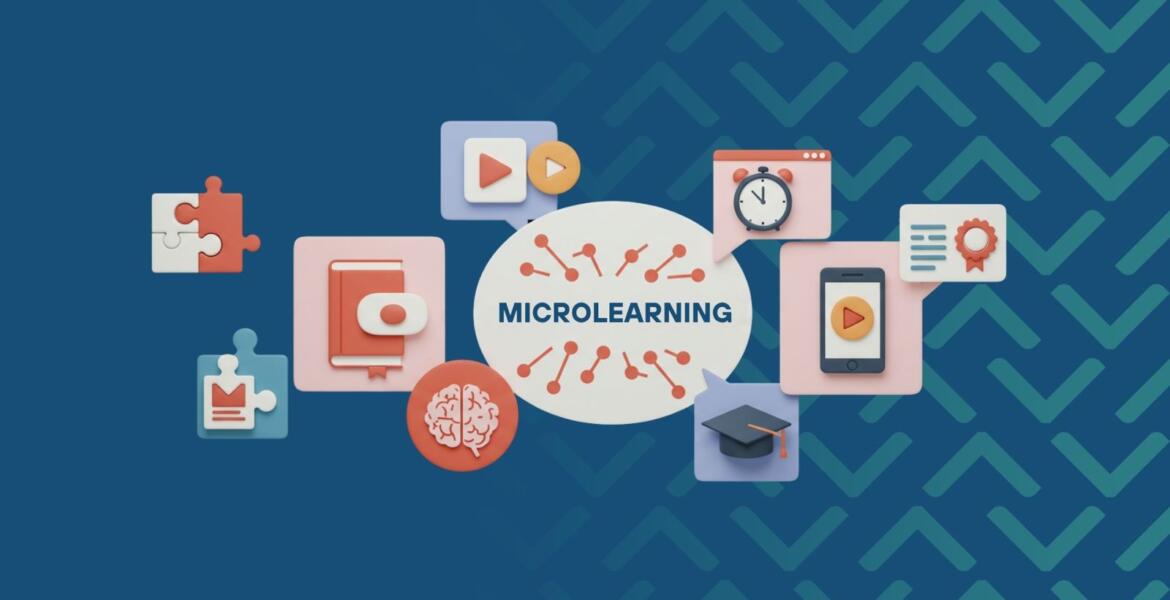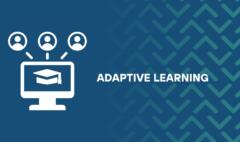Microlearning in Training Centers
- What is Microlearning?
In today’s fast paced world, learners often lack the time to sit through lengthy training sessions. Microlearning addresses this challenge by delivering content in small, focused units, typically lasting between 3 to 10 minutes. Each unit targets a single concept or skill, making it easier for learners to grasp and apply the information promptly.
– Definition of Microlearning
Microlearning is a training approach that presents content in short, purposeful segments, usually ranging from 3 to 10 minutes. It focuses on delivering one piece of information or skill per unit, facilitating easier comprehension and immediate application.
– How It Differs from Traditional Education
Unlike traditional education, which often involves extended lectures and theoretical exercises, microlearning is:
- Quick and Focused: No lengthy sessions or distractions.
- Digital and Interactive: Often delivered through apps or online platforms.
- Self Directed: Learners can access content anytime, catering to their needs.
– Simple Examples of Microlearning
- A brief video demonstrating how to use a specific tool at work.
- A flashcard outlining steps to solve a common problem.
- An interactive quiz assessing understanding of a particular concept.
While microlearning doesn’t replace comprehensive training programs, it serves as a smart supplement that reinforces learning and encourages self directed study.
- Benefits of Microlearning in Training Environments
Implementing microlearning in training centers offers several advantages:
- High Focus and Greater Effectiveness: Each unit targets a single learning objective, enhancing concentration and retention.
- Alignment with Modern Learning Styles: Today’s learners, especially digital natives, prefer concise and interactive content.
- Enhanced Engagement and Participation: Tools like short videos, real time quizzes, and reminders make learning more interactive.
- Reduced Costs and Time: Instead of organizing extended workshops, reusable microlearning modules can be developed, saving resources.
- Flexibility in Learning: Learners can access content from anywhere, at any time, making it ideal for self paced learning or on the job training.
- Continuous Professional Development: Microlearning modules can be quickly updated to reflect industry changes, ensuring learners remain current.
- Why Microlearning Suits Modern Training Centers
Traditional training centers face challenges such as low attendance, high costs, and difficulty in measuring immediate impact. Microlearning offers a dynamic solution:
- Meets Rapid Industry Demands: Enables quick delivery of relevant skills without disrupting work.
- Aligns with Learner Expectations: Provides fast, interactive, and personalized learning experiences.
- Easy to Update and Customize: Content can be swiftly modified to keep pace with technological advancements or job requirements.
- Enhances Competitiveness: Centers offering efficient, tailored training gain trust and positive feedback compared to those relying on traditional methods.
- Forms of Microlearning Used in Training Centers
Microlearning can take various forms, including:
- Short Educational Videos: Typically 3 to 5 minutes, explaining a specific concept or procedure.
- Infographics: Visual representations of information, summarizing key points for quick understanding.
- Interactive Quizzes: Assessments that engage learners and reinforce knowledge.
- Simulation Scenarios: Real life situations allowing learners to practice decision making and problem solving.
- Short Audio Clips (Podcasts): Convenient for learners to absorb content during commutes or breaks.
Each format serves a unique purpose and can be integrated into training programs based on content and learner preferences.
- Implementing Microlearning in Training Centers
To effectively incorporate microlearning:
- Identify Specific Skills or Knowledge Areas: Determine the precise competencies to be addressed.
- Break Down Traditional Content: Divide comprehensive training materials into smaller, focused modules.
- Select Appropriate Delivery Methods: Choose the most effective medium (video, infographic, quiz) for each topic.
- Integrate Microlearning into Broader Programs: Use microlearning as a supplement before, during, or after traditional training sessions.
- Utilize Suitable Technology Tools: Employ Learning Management Systems (LMS) that support microlearning content delivery and tracking.
- The Role of Technology in Supporting Microlearning within Training Centers
It’s impossible to discuss microlearning without highlighting the essential role of technology in designing, delivering, and evaluating its impact. Modern technologies have made implementing short training units easier and more effective, both in production and distribution.
– Mobile Applications
Smartphones have become the preferred environment for microlearning. Through dedicated apps, learners can watch videos, take quizzes, or receive regular educational notifications, ensuring continuous learning even while on the move or during breaks.
– Learning Management Systems (LMS)
Platforms like Moodle, TalentLMS, or Google Classroom enable organizing micro content, customizing it per learner, and tracking performance in real time. These systems facilitate content management and ongoing updates for training centers.
– Artificial Intelligence and Machine Learning Tools
AI algorithms analyze learner behavior and suggest educational units tailored to their weaknesses or progress, enabling a personalized learning experience.
– Virtual Reality (VR) and Augmented Reality (AR)
For practical training, VR can simulate real life scenarios in a short time, such as device maintenance or customer interaction, without leaving the training environment.
– Educational Robots and Chatbots
These tools can provide instant responses to learners’ inquiries or guide them interactively to the appropriate content.
In short, technology is not just a supporting tool but the nurturing environment for microlearning. The more training centers adapt to technology, the more effective their training programs become.
- MicroLearning’s Impact on Improving Trainee Performance
The ultimate goal of any training program is to enhance the learner’s actual performance. Microlearning is one of the most effective methods to achieve this for several clear and documented reasons.
– Improved Concept Assimilation
Studies show learners who receive information in small doses have a better understanding and immediate application compared to those exposed to large doses in a short time.
– Focus on Fast, Measurable Results
Each microlearning unit focuses on a single skill or piece of information, making its impact easier to measure and improvements in performance quickly identifiable.
– Continuous Motivation
Short learning segments encourage learners to keep going because achieving a small goal motivates reaching the next one. This method generates a constant sense of accomplishment, boosting intrinsic motivation.
– Immediate Application in the Workplace
Due to its direct content nature, learners can apply what they’ve learned instantly on the job, enhancing performance and helping to develop correct professional habits.
– Repetition Without Boredom
The ability to replay units multiple times without feeling bored helps cement knowledge, an important advantage in training technical or complex skills.
Therefore, training centers adopting this approach see tangible improvements in training outcomes, both in comprehension and practical application.
- Challenges Facing Microlearning Implementation in Training Centers
Despite the clear benefits, implementing microlearning in training centers is not without challenges. Recognizing these obstacles is the first step toward overcoming them effectively.
– Resistance to Change
Some trainers or administrators may prefer traditional methods and doubt the effectiveness of short content. This requires awareness and training on the advantages of the new model.
– Difficulty in Designing Effective Content
Creating a brief yet impactful learning unit is not easy. It demands expertise in instructional design and intelligent use of media without losing meaning.
– Lack of Specialized Content
Some centers lack ready made microlearning content, necessitating internal production or collaboration with external providers.
– Weak Technical Infrastructure
Some centers may lack an LMS or sufficient digital tools to deliver and track content, delaying optimal model implementation.
– Absence of Tailored Evaluation Metrics
Another challenge is the limited tools to assess microlearning, especially practical skills, requiring development of new performance indicators aligned with this approach.
However, these challenges can be addressed through a clear plan, staff training, and investment in content and appropriate technologies.
- The Relationship Between Microlearning and Blended Learning
Microlearning and blended learning are not substitutes but complement each other, and can be seamlessly integrated within training programs.
– Blended Learning as a Comprehensive Model
Blended learning combines traditional and electronic education, allowing microlearning units to be used as complementary tools within the overall program.
– Microlearning as a Flexible Tool Within the Blended Model
Microlearning can be used as a pre course introduction, a post course review, or even during sessions to clarify concepts or support learners of varying levels.
– Shared Benefit: Enhancing Individualized Learning
Both approaches promote learner autonomy, but microlearning provides short, targeted learning boosts, fitting fast and immediate learning environments.
– Examples of Integration
A blended course on “Communication Skills in the Workplace” could include microlearning units on “Body Language,” “Handling Customer Objections,” and “Managing Critical Conversations.”
This integration amplifies the training program’s impact and makes the learning process more balanced and flexible.
- The Future of Microlearning in the Context of Digital Transformation
All indicators suggest that microlearning is the future of modern professional training, especially amid rapid digital transformation and evolving work and learning styles worldwide.
– Adoption by Global Companies
Companies like Google, IBM, and Microsoft use microlearning for continuous employee development, demonstrating its seriousness and efficiency.
– Evolution of Intelligent Learning Tools
Soon, learners will receive personalized microlearning units based on AI analysis of their personality and professional behavior.
– Predictive Learning and Personalized Paths
Smart systems will anticipate skills learners will need and provide preemptive training units preparing them for future tasks.
– Integration into Organizational Learning Culture
Microlearning will become a daily educational tool, used for motivation, guidance, and review, becoming part of the employee’s work routine.
Thus, microlearning is no longer just a trend but a core element in the future of human capital development.
- Effective Strategies for Designing Microlearning Content in Training Centers
To ensure the effectiveness of microlearning within training centers, content must be designed professionally, attractively, and focused. Proper design is not just about aesthetics but guarantees delivering the educational message in the least time with the greatest impact.
– Focus on One Objective per Unit
Each microlearning unit should concentrate on only one concept or skill. This prevents learner distraction and helps quick understanding and immediate application.
– Use Simple and Direct Language
Complex language slows down comprehension. Therefore, it is preferable to use clear language, short sentences, and vocabulary understandable by all target groups.
– Attractive Visual Design
Use smart visual design elements such as illustrations, icons, and clear fonts. These elements motivate learners to watch and interact.
– Be Concise but Don’t Oversimplify
The goal of microlearning is not to oversimplify in a way that loses meaning but to focus on the essence of the idea. Avoid lengthy explanations but do not omit essential details.
– Integrate Interaction
Add questions, scenarios, or challenges at the end of each unit to encourage learners to think and engage with the content, enhancing retention.
– Use Balanced Audio and Visuals
If the content is visual, it should be delivered with professional, clear voiceover, considering timing of elements and speaking pace.
Good microlearning content is not only fast but also high-quality and intelligently directed toward achieving real educational impact.
- Comparison Between Microlearning and Traditional Learning in Training Centers
To truly understand the difference between the two styles, here is a comprehensive comparison highlighting the key features and differences:
| Aspect | Traditional Learning | Microlearning |
| Session Duration | From one hour to several hours | From 3 to 10 minutes |
| Scope of Information | Broad and comprehensive | Narrow and focused on one skill |
| Delivery Methods | Lectures, books, slide presentations | Videos, flashcards, interactive quizzes |
| Attendance Flexibility | Fixed time and place | Available anytime, anywhere |
| Comprehension Level | Prone to distraction or boredom | More focused and easier to understand |
| Interaction and Motivation | Usually limited | High due to immediate interaction |
| Ease of Updates | Complex and time-consuming | Fast, adjustable, and customizable |
| Immediate Impact Measurement | Difficult and depends on later tests | Immediate after each unit |
It is clear from the table that microlearning achieves higher efficiency in less time, making it highly suitable for modern learners and training centers seeking excellence and rapid responsiveness to change.
- Microlearning as a Tool to Enhance Continuous Learning and Professional Skills Updating
In a constantly changing professional environment, it is no longer sufficient to acquire a skill once. Individuals must continuously develop themselves. Here, microlearning represents the optimal solution to foster a “lifelong learning” mindset.
– Ease of Repeated Learning
Microlearning units can be used as periodic reviews to remind employees of key concepts or as triggers to reflect on new situations.
– Supporting Individual Learning Plans
Each employee can select the units they need based on their role without having to attend long courses that may not be directly relevant.
– Quick Response to Market Changes
When a new skill is required in the market, a short learning unit can be created within days, enabling quick and efficient employee training.
– Immediate Access to Knowledge
Employees do not have to wait for a full training course; they can search for the right unit and solve their problem or learn the new skill instantly.
Therefore, microlearning is a strategic tool for centers wishing to transform from content providers to continuous competency development centers.
- Practical Recommendations for Effectively Adopting Microlearning in Training Centers
To ensure the success of microlearning, centers must adopt a clear plan and precise implementation methodology. Here are some practical recommendations:
- Start with basic recurring skills: such as customer service, presentation skills, and using work tools.
- Invest in easy and effective design tools: like Canva, Powtoon, Vyond, Articulate Rise.
- Train your team to produce microlearning content: to build internal autonomy and development capacity.
- Collect feedback from trainees: after each unit to identify areas for improvement.
- Use ready made content when needed: don’t always start from scratch; many educational libraries offer high quality content.
- Link microlearning to job motivation: e.g., completion of a certain number of units can count towards evaluations or promotions.
- Provide space for trainees to choose their units: encouraging them to build their personal learning plans.
By systematically applying these recommendations, training centers will be better able to meet individual and institutional needs quickly and with specialization.
Conclusion
Microlearning has proven itself as a smart, fast, and effective solution in modern work and training environments. Today’s learners no longer seek long courses that drain their time and effort but turn to short learning units that give them exactly what they need at their own pace.
Training centers that recognize this shift and integrate microlearning into their programs will be more capable of achieving results, gaining learner trust, and keeping pace with the evolving job market demands.
Investing in microlearning units is not just a step toward modernization but a qualitative leap in knowledge delivery, competency building, and supporting continuous learning.
FAQs
- Is microlearning suitable for all types of training?
Not necessarily, but it is ideal for teaching quick skills, basic concepts, or repeated reviews. - How do I start implementing microlearning in my training center?
Start by identifying precise skills, then design simple and engaging content around each skill using short videos or interactive cards. - What is the ideal duration for each microlearning unit?
It ranges from 3 to 10 minutes only. The key is to focus on one specific objective per unit. - Does microlearning replace traditional training?
It does not completely replace it but is a perfect complement, especially in supporting continuous learning and improving engagement. - How can the effectiveness of microlearning be measured?
Through short tests, user interaction analysis, performance evaluation after application, and comparing results with previous data.






